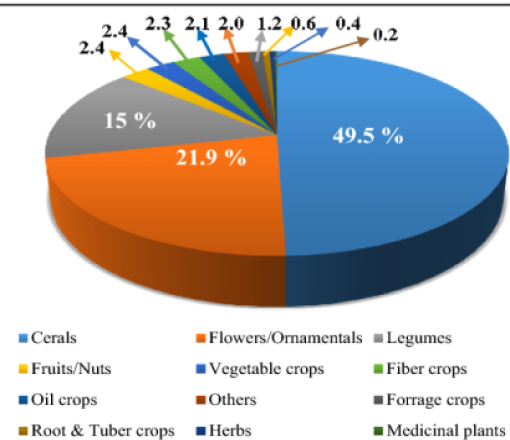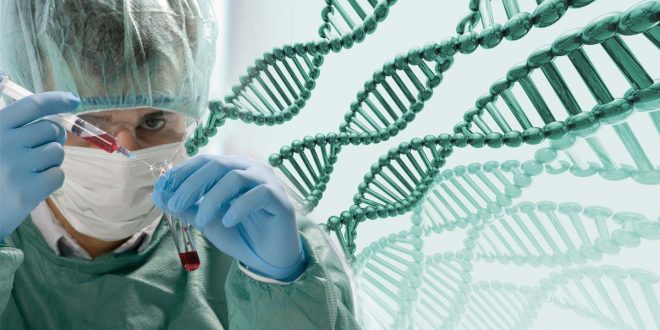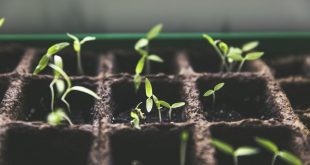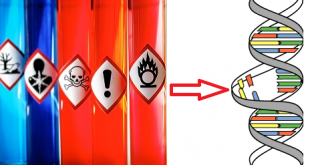Mutations are tools to study the nature and functions of genes, as well as to generate raw materials for genetic improvements of crop plants. Many crop varieties with better quantitative, qualitative, and economic value have been developed using it. Recognizing the relevance of this technique in a country’s agricultural development, research work began in 1961 in the then Pakistan Atomic Energy Commission at Dhaka.
Following the independence in 1972, the Institute of Nuclear Agriculture(INA), now known as Bangladesh Institute of Nuclear Agriculture(BINA), was formed, which encompassed various fields. In 1975, it was relocated to the current Bangladesh Agricultural University campus in Mymensingh. In this article, we will discuss the application, advantages, and limitations of the mutation breeding process. Also, the achievements of Bangladesh in producing improved varieties of crops using mutation breeding will be stated.
Application of Mutation Breeding
It has been used for improving morphological and physiological characters, disease resistance, and quantitative characters including yielding ability.

The various application of mutation breeding are:
- It is useful in improving certain specific characteristics of a well-adapted high-yielding variety. This is particularly useful in floriculture crops which are mostly clonally propagated. These crops show a highly heterozygous nature. Therefore, in such a case mutagenesis is the only method available to improve the specific characteristics of clones without changing their genetic makeup.
- Inductions of desirable mutant alleles that may not be present in the normal population of germplasm or may be present but may not be available to the breeder due to political or geographical reasons.
- It can also be used on F1 hybrids or progenies resulting from inter varietal crosses. These may be treated with mutagens in order to increase genetic variability by inducing mutations and to facilitate recombination among linked genes.
- Irradiation of inter-specific (distant) hybrids has been done to produce translocations.
- Mutations can produce inexhaustible variations. Therefore, mutation breeding makes the plant breeders free from complete dependence on nature for raw materials.
- When no improvement is possible, irrespective of whether a variation is present or not by conventional methods, the only alternative is mutation breeding.
- Mutation breeding is used in achieving maximum utility in crop improvement.
- When naturally occurring variability is exhausted, mutation breeding is used.

Characteristics of Mutation
- Mutations are generally recessive. Although dominant mutants sometimes occur in nature.
- Generally harmful to organisms, a small percentage of mutation is beneficial.
- Occurs at random in the chromosome, may occur in any gene.
- Some genes show a higher mutation rate than others.
- Some mutations are recurrent, they occur again and again in the organism.
- Induced mutations usually show pleiotropy.
Advantages of Mutation breeding
- Mutation breeding can be used for both oligogenic and polygenic traits in plants.
- It improves the morphological and physiological characters of collected crops.
- Mutation breeding can improve the disease resistance of crop plants.
- Induced mutations can induce desirable mutant alleles in crop plants.
- Mutation breeding can be used to improve the specific characters of the well-adapted high-yielding variety.
- Quantitative characteristics of crop plants including yield can be improved by induced mutations.
- The F1 hybrids obtained from inter varietal cross are treated with mutagens to increase variability.
- Mutation breeding can effectively disseminate an undesirable character from a crop variety.
- Mutation breeding is the simplest, quickest, and best way when a new character is to be induced.
Limitations of Mutation Breeding
- The frequency of desirable mutation will be very low. (0.1% of total mutations)
- The breeder has to screen a large population to select a desirable mutation.
- Desirable mutations are commonly associated with undesirable side effects.
- Mutations often produce pleiotropic effects.
- Mutation in quantitative traits is usually in a direction away from the selection history of the parent variety.
- There may be problems in the registration of mutant varieties in many parts.
- Mutation breeding, in absence of full information about the genotype of material, proper mutagen, and its efficiency, frequency of different kinds of mutations, and other relative phenomena and factors, is not a good device for crop improvement.
- Mutation breeding work is confined to a few institutions where irradiation facilities and trained personnel are available. Government too can afford to grant such facilities only to a few institutions.
- There are health risks in handling chemical mutagens, radiations, fast neutron treatments.
Achievements of Mutation Breeding in Bangladesh
| Crop | Variety Name | Physical/ Chemical Mutagen | Mother Variety | Year of Release |
| Rice | Iratom-24 | 300Gy gamma radiation | IR 8 | 1975 |
| Iratom-38 | 300Gy gamma radiation | IR 8 | 1975 | |
| Binasail | 250Gy gamma radiation | Nizersail | 1987 | |
| Binadhan-4 | 250Gy gamma radiation | BR-4 and Iratom-24 | 1998 | |
| Binadhan-5 | 250Gy gamma radiation | Iratom-24 and Dular | 1998 | |
| Binadhan-6 | 250Gy gamma radiation | Iratom-24 and Dular | 1998 | |
| Binadhan-7 | 250Gy gamma radiation | Tai nguen | 2007 | |
| Binadhan-9 | Hybridization | Y-1281 | 2012 | |
| Jute | Atompat-38 | 900Gy gamma radiation | D-154 | 1988 |
| Binadeshipat-2 | NaN3 | CVL-1(BJRI line) | 1997 | |
| Chickpea | Hyprosola | 200Gy gamma radiation | Faridpur-1 | 1981 |
| Mungbean | Binamoog-2 | Hybridization | Mutant MB-55(4)×V-2773(AVRDC line) | 1994 |
| Blackgram | Binamash-1 | 600Gy gamma radiation | Local cultivar(Bina Acc. B-10) | 1996 |
| Mustard ( Brassica campestris) | Safal | 700Gy gamma radiation | Advanced line YS-52 | 1991 |
| Agrani | 700Gy gamma radiation | Advanced line YS-52 | 1991 | |
| Mustard( Brassica napus) | Binasarisa-3 | 700Gy gamma radiation | Nap-3 | 1997 |
| Binasaria-4 | 700Gy gamma radiation | Nap-3 | 1997 | |
| Tomato(winter) | Anobik | 200Gy gamma radiation | Local variety | 1975 |
| Bahar | Hybridization | Anobik×Oxheart | 1992 | |
| Tomato(summer) | Binatomato-2 | Hybridization | Advanced line S1×Bahar | 1997 |
| Binatomato-3 | Hybridization | Advanced line S1×Bahar | 1997 |

At the IAEA (International Atomic Energy Agency) conference of 2021, Bangladesh Institute of Nuclear Agriculture(BINA) recieved the “Outstanding Achievement Award” for its outstanding contribution to mutation breeding. Besides, Dr Shamsunnahar Begum, head and chief scientific officer, department of plant breeding, BINA, got the “Women in Plant Mutation Breeding Award”.
Mutation induction has proven to be a reliable method of producing variability within a crop variety. It allows for the induction of that characteristics that are either not existent in nature or have been lost due to evolution. The use of nuclear technology for plant mutation breeding is environmentally friendly and safe for human consumption and accessible to developing countries.
Related Articles
- Mutation Breeding: Definition, Types and History
- Mutation breeding: material selection, dosage, procedure & precuation
- Mutagenic agents: types, mechanism & irradiation breeding
References
- Principles of plant genetics and breeding by George Acquaah
- Achievements of Bangladesh from International Atomic Energy Agency (IAEA)
- Achievements in rice research at BINA from researchgate
 Plantlet The Blogging Platform of Department of Botany, University of Dhaka
Plantlet The Blogging Platform of Department of Botany, University of Dhaka




very impressive. So much informative
Thank you for the compliment 💖
Wow so many achievements in bangladesh
lot of information in one place. very helpful.